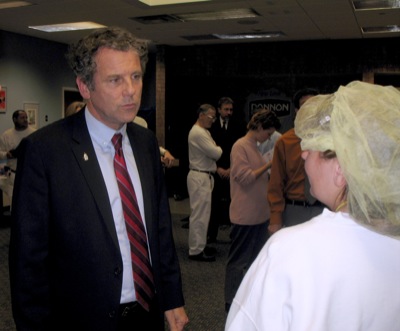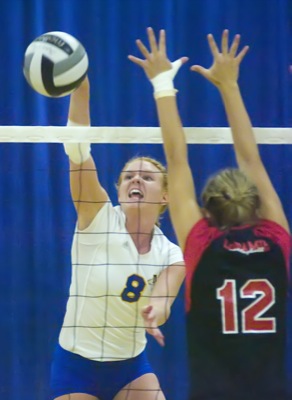Tuesday, October 5th, 2010
Group casts new idea
Carp derbies may return to lake
By Nancy Allen
ST. MARYS - Carp derbies, popular on Grand Lake in the 1950s, may be held as a way to reduce the lake's population of rough fish and increase game fish.
Tom Knapke, facilitator of the Lake Restoration Commission, told members of the nonprofit Lake Development Corporation on Monday that a meeting was held with state officials to discuss the issue.
Rough fish eat a lot of phytoplankton, which the game fish need while young until they become carnivores. Rough fish also secrete a lot of dissolved phosphorous in their waste, which feeds the toxic blue-green algae.
Knapke pulled out a 1932 newspaper story that said 200,514 carp were caught between June 14 and Sept. 8 during a carp derby on Grand Lake. LDC President Jim Dabbelt said he can remember participating in carp derbies as a child. He and three friends caught more than 1,000 in a few days, he said.
It was not unusual to see huge signs around the lake advertising the events that were held routinely to keep the carp population down.
"We're looking to local anglers to help us with ideas," Knapke said. "Maybe with carp derbies or tournaments without a whole lot of cost."
Greg Schumm said a carp derby or tournament would be a way to bring an event back to the lake.
"What if we could get large sponsorship for a carp tournament and generate some revenue," he asked. "Get someone to put up $1,000 or $500 for first place and get something positive going."
Donna Grube, director of the Auglaize & Mercer Counties Convention and Visitors Bureau, said Indian Lake has a two-day carp tournament.
Mike Shelton, chief of external affairs for the Ohio Department of Natural Resources, said the state would support a carp derby. Organizers would need to get a special event permit through the state's division of parks, something Shelton said is not difficult to do.
He said gizzard shad and carp, which can grow quite large, secrete a lot of phosphorous in their waste, but overall their contribution to the total amount of phosphorous in the lake is marginal.
"But if there is something positive that can be done to get people coming back to the lake and reduce the internal (phosphorous) loading even a little that would be good," he said.
Shelton said lakes with poor water quality have more rough fish because they can tolerate murky water and low dissolved oxygen levels better than game fish, such as bass and walleye.
Dan Manning, who owns The Outdoorsman in St. Marys, said he's talked about holding a carp tournament on the lake for years, but just hasn't done it.
"It would be a fun endeavor," Manning said. "There's some big carp out there and they're a blast to catch."
Unlike a bass tournament, a carp tournament wouldn't be a catch and release, Manning said. But that's OK, because they are overabundant.
"They're so plentiful, so obviously you're not worried about them like the game fish population," he said.
Doug Maloney, a fish management supervisor with the Ohio Division of Wildlife, said the division has no official estimate on the number of carp in Grand Lake, but agreed they are plentiful.
"From a biologist's perspective, you'd have to have one heck of a turnout for this event and they would have to be pretty productive to put a dent in the carp population," he said. "There are many, many thousand carp in the lake."

